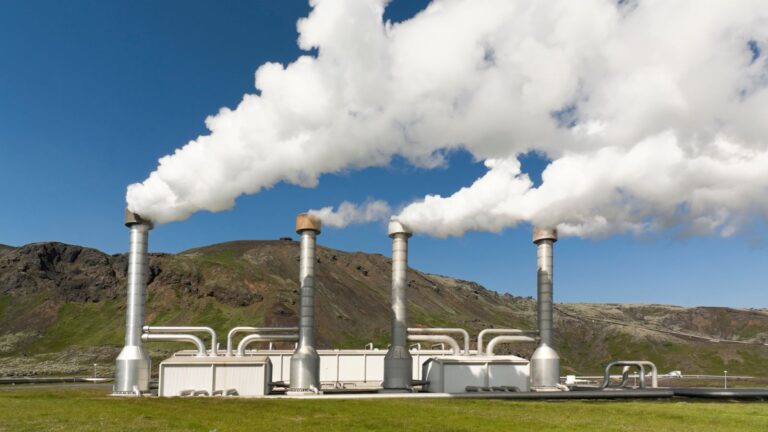This report represents the research and views of the author. It does not necessarily represent the views of the Center on Global Energy Policy. The piece may be subject to further revision. Contributions to SIPA for the benefit of CGEP are general use gifts, which gives the Center discretion in how it allocates these funds. More information is available at Our Partners. Rare cases of sponsored projects are clearly indicated. For a full list of financial supporters of the Center on Global Energy Policy at Columbia University SIPA, please visit our website at Our Partners. See below a list of members that are currently in CGEP’s Visionary Annual Circle.
-
CGEP’s Visionary Annual Circle
-
(This list is updated periodically)
Jay Bernstein
Breakthrough Energy LLC
Occidental Petroleum Corporation
Foreword
Zero-carbon electricity will be the backbone of a net-zero economy, not only keeping the lights on in our homes and offices but also powering our transportation systems and industrial processes. Indeed, research indicates that in order to decarbonize the economy at a reasonable cost and within a reasonable time frame, we must rapidly decarbonize and grow the power sector.
Electricity—how it is generated, moved along the transmission and distribution grids, and used—is already undergoing a rapid transformation in the United States. This transition has been supported over the last decade by steep cost declines for wind, solar, and battery technologies as well as cheap natural gas produced via hydraulic fracturing. But the transition to a net-zero power sector needs to accelerate to mitigate climate change, which is already impacting the health of people around the country and world.
New long-distance, high-voltage transmission lines will be vital if the United States is to deploy enough renewable generation capacity to decarbonize the power sector and to integrate it cost-effectively, as well as electrify our economy in time to meet the targets established in the Paris Agreement. Because Congress may not take timely action to remove barriers to these power lines, policy makers and the incoming Biden administration should explore how the federal government could use existing authorities to foster new long-distance transmission line development.
This paper seeks to explain steps that the federal government—particularly from within the US Department of Energy and Federal Energy Regulatory Commission—could take to facilitate development of a future grid that is capable of supporting a reliable, affordable, and increasingly zero-carbon power sector. Consistent with the mission of the Center on Global Energy Policy at Columbia University SIPA to advance smart, actionable, and evidence-based energy and climate solutions through research, education, and dialogue, the goal in publishing this paper in partnership with NYU School of Law’s Institute for Policy Integrity is to provide insights that are useful to policy makers in the format and time frame needed.
We hope that this report contributes to supporting informed dialogue on potential tools for building a sustainable power sector in the United States.
Dr. Melissa C. Lott
Senior Research Scholar & Lead, Power Sector and Renewables Research Initiative
Center on Global Energy Policy
Executive Summary
Decarbonizing the US economy at a reasonable cost will necessitate the construction of new, long-distance transmission lines. However, state-level regulatory requirements for the selection of transmission line routes and for the assembly of environmental, land use, public utility, and other permits and property rights have proved to be a barrier to broader power transmission. Retaining the current process for siting these transmission lines may stymie the development of renewable resources in critical locations across the United States where sunshine and wind are plentiful.
Ideally, Congress would take action to overcome the regulatory and commercial barriers that have frustrated long-distance transmission development, with legislative solutions rooted in cooperative federalism. However, such action is not guaranteed and may not be realistically expected to occur in a timeframe an administration determines is necessary to address the crisis presented by climate change.
In the absence of legislation, critical long-distance transmission can be developed by applying existing federal legal authorities. A number of important regulatory and commercial measures have been proposed, including streamlining transmission planning, upgrading existing transmission system components, putting transmission lines underground, and using existing rights-of-way from highways and railroads. Even if these solutions are adopted, however, state siting requirements may prove an important obstacle to developing an efficient, national transmission grid. So, this paper examines legal authorities already available to federal agencies to develop the interstate transmission capacity crucial to the energy transition. Judicial interpretations and political roadblocks have limited these authorities’ effective use over the past decade but are not fatal, should an administration seek to use them.
The paper focuses on three sources of federal regulatory authority. Section 216 of the Federal Power Act, which directs the Department of Energy (DOE) to designate national interest energy transmission corridors and, if a state agency impermissibly stalls or rejects a project in a corridor, authorizes the Federal Energy Regulatory Commission (FERC) to issue a federal permit that preempts state limits and grants the permit holder eminent domain authority. Section 1222 of the Energy Policy Act of 2005 authorizes DOE to partner with private entities to develop transmission facilities, which both frees development efforts from state-level regulatory requirements and imbues them with federal eminent domain authority.
In addition, federal power marketing administrations that market and deliver hydropower generated by federally owned dams have statutory authority to develop new transmission facilities across large swaths of the continental US without concern for key state-level regulatory requirements and with the power of federal eminent domain.
The paper outlines the following steps for an administration seeking to construct new, long-distance interstate transmission lines:
- Revitalize section 216 via coordinated efforts by DOE and FERC. would require coordinated efforts by DOE and FERC. First, DOE should expeditiously designate new transmission corridors on the basis of expected future constraints that would arise if new renewable energy projects are developed without the requisite long-distance transmission. Those corridors should be undertaken in close coordination with FERC’s process for issuing federal permits. Namely, corridors should be designated on a project-specific basis and the corridor designation criteria and federal permitting criteria should be harmonized. To further streamline the process, DOE should consider delegating its corridor designation process to FERC.
- FERC should issue new regulations clarifying its permitting process. Those regulations should make clear that transmission projects intended to connect geographically constrained renewable energy to customers are eligible for a federal permit if a state agency impermissibly stalls or rejects the project. The regulations should clarify what constitutes an impermissible stall or rejection, including the failure of a state to consider the interstate benefits of a transmission project, the inability of nonincumbent transmission developers to qualify for necessary permits within a state, and state denial of a permit to a project that FERC deems to be in the public interest. The regulations should also provide a prefiling process that allows FERC to begin review, including environmental review, of a project simultaneous to state consideration.
- Revitalize section 1222 by issuing a refreshed RFP for transmission projects that previews for bidders and other stakeholders a streamlined process of review and implementation. Furthermore, marshal resources—including staff time, political capital, and appropriations—to expedite projects through the steps of contracting and development.
- Refocus the authority and resources of DOE’s power marketing administrations on the question of where new transmission development would yield cost-effective improvements to system performance.





